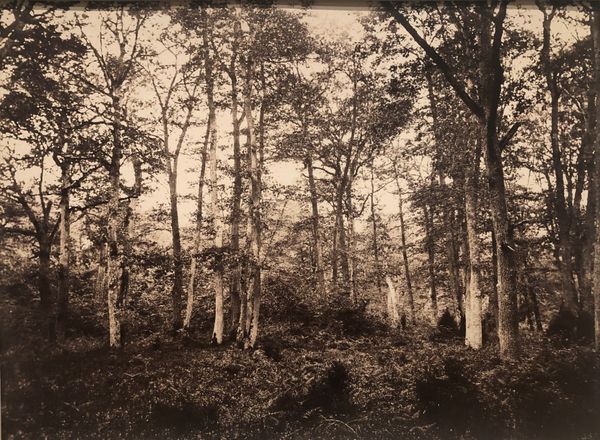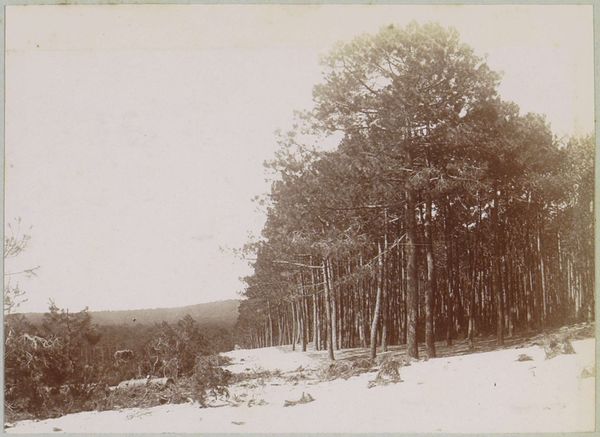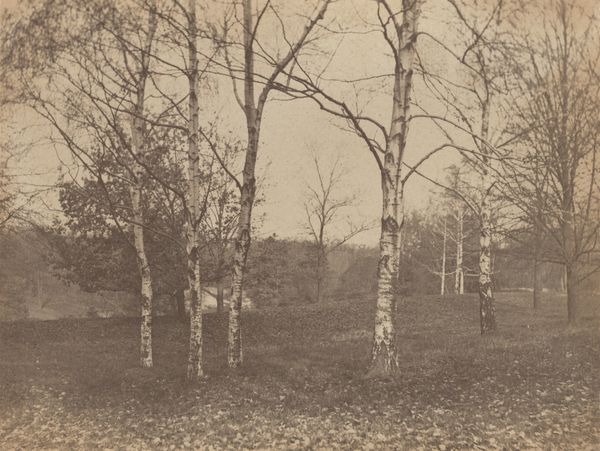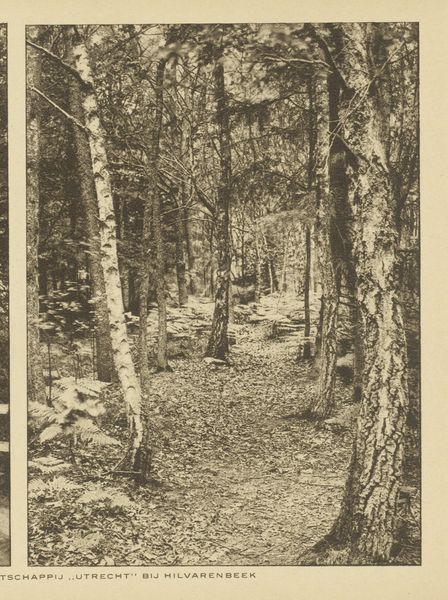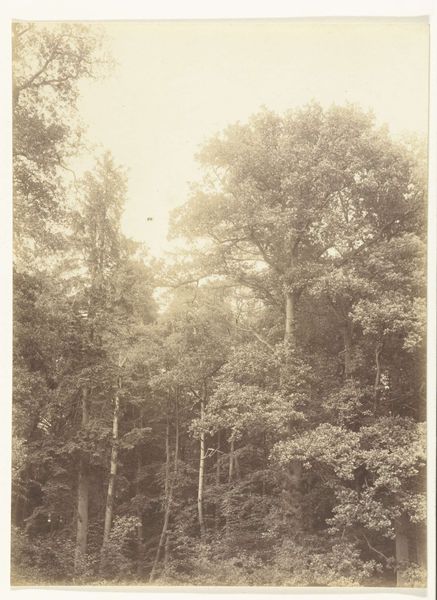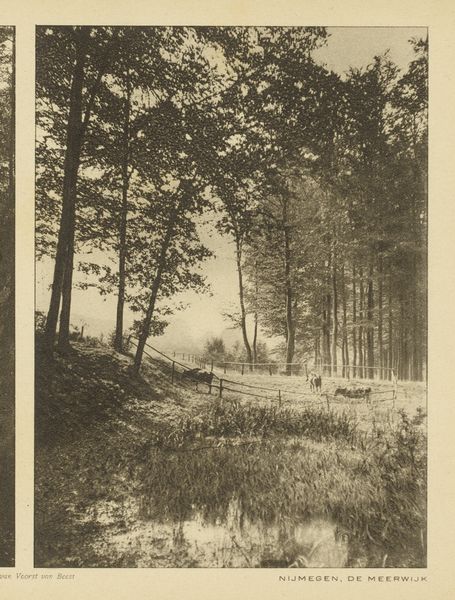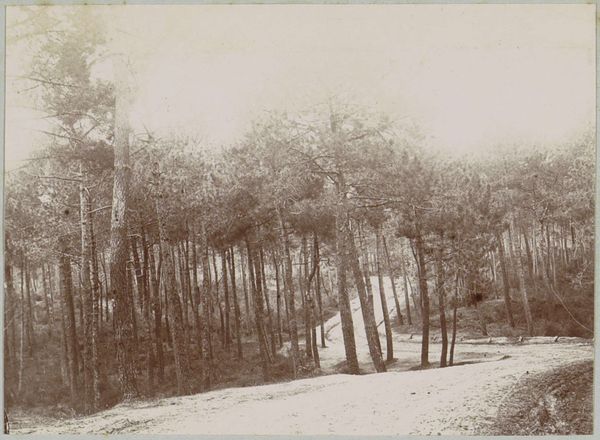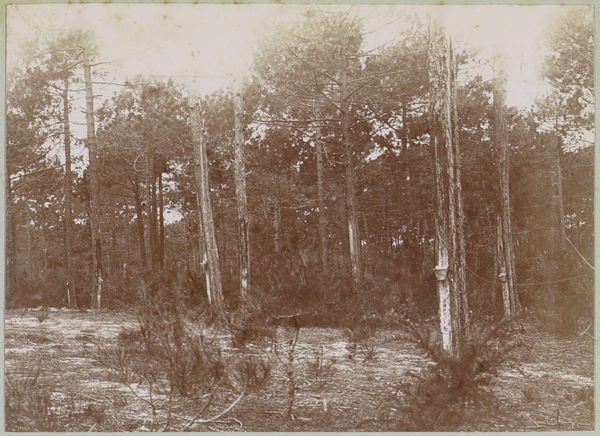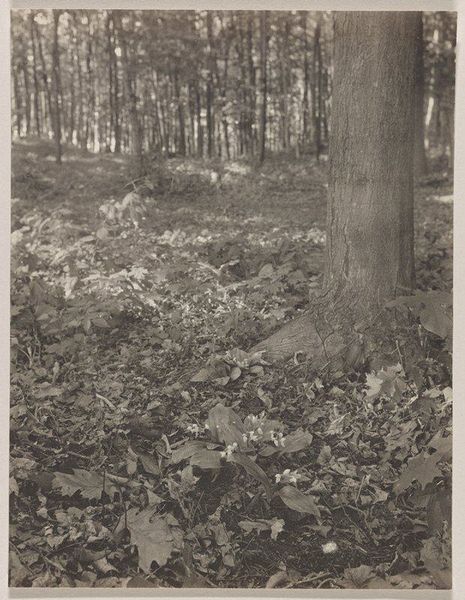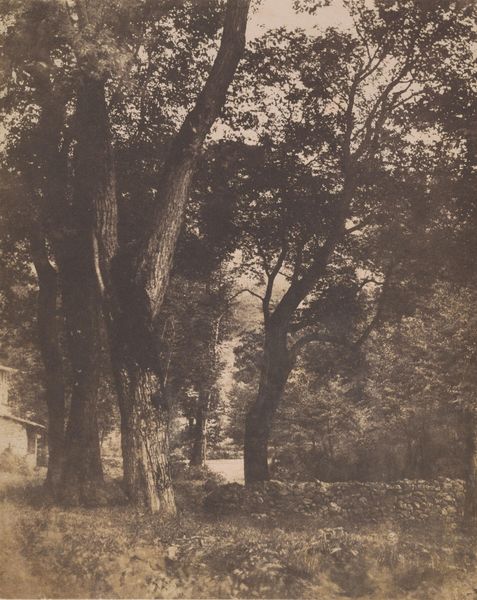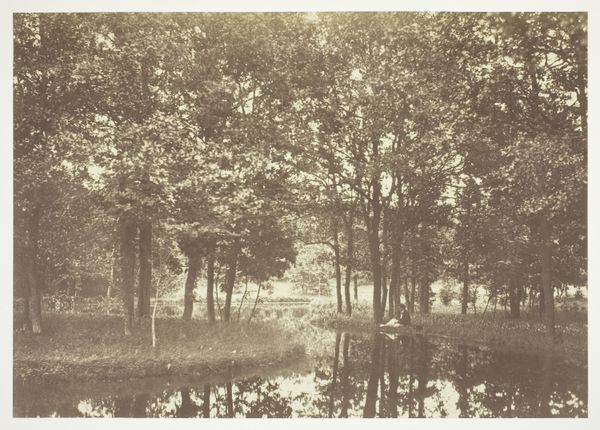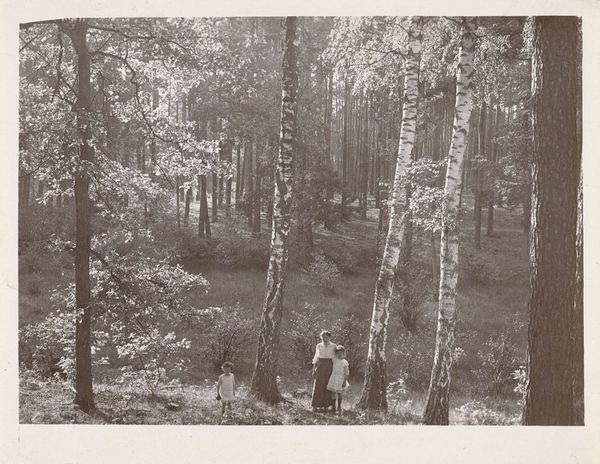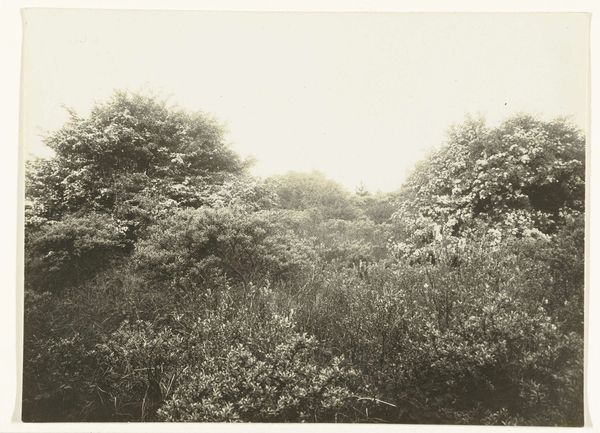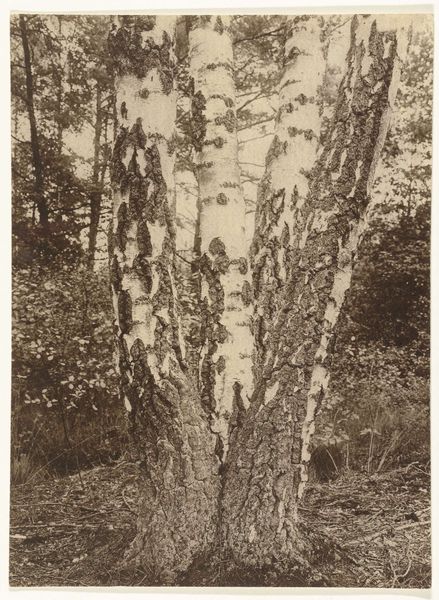
photography
#
pictorialism
#
organic shape
#
landscape
#
nature
#
photography
#
realism
Dimensions: height 169 mm, width 227 mm
Copyright: Rijks Museum: Open Domain
Curator: This is a photograph called "Birches in a Pine Forest" by Richard Tepe, probably taken sometime between 1900 and 1930. Editor: It's a scene shrouded in quietude, almost sepulchral with its monochromatic tonality. The composition feels very...vertical, doesn't it? Curator: Yes, the eye is immediately drawn upwards by the stark white birch trunks against the darker evergreens, and against a shadowy background. Birch trees often represent purity, new beginnings, or growth because of their vibrant color and ability to grow back quickly after being cut. The contrast with the darker, more established pines hints at themes of resilience. Editor: Structurally, that sharp contrast creates a real tension. The birch are positioned very deliberately, creating a strong foreground, dividing the picture into clearly defined planes. This draws me in. Do you know anything about the printing process used? Curator: While the exact technique Tepe used for this piece isn't specified, his work is generally associated with pictorialism. Editor: Pictorialism, of course. It emphasizes the aesthetic beauty, in much the same way painting does, by focusing on softness, texture, and tonality rather than purely sharp, objective depiction. You see that soft focus, that almost hazy quality in the details? It's deliberately evoking a mood. Curator: Absolutely. Consider the context of its creation, during the rise of industrialization. Images of nature were potent symbols that evoked longing for an idealized, more 'authentic' past and life. Editor: And Tepe clearly wants us to feel it. He is creating an intensely composed artwork out of nature rather than merely capturing nature with a camera. It is definitely of its time in that respect. I might add the placement of the single birch at left creates a kind of picture-within-a-picture effect. Curator: Interesting, I hadn't thought about that aspect of the work, and yet it offers the composition, again, so much verticality and tension between planes of shadow and light, purity, and experience... Editor: Ultimately, "Birches in a Pine Forest" offers more than just a tranquil scene; it provides an emotionally nuanced study of resilience, change, and enduring beauty in the natural world. Curator: And a striking visual record of the aesthetic sensibilities of a pivotal period in history.
Comments
No comments
Be the first to comment and join the conversation on the ultimate creative platform.
